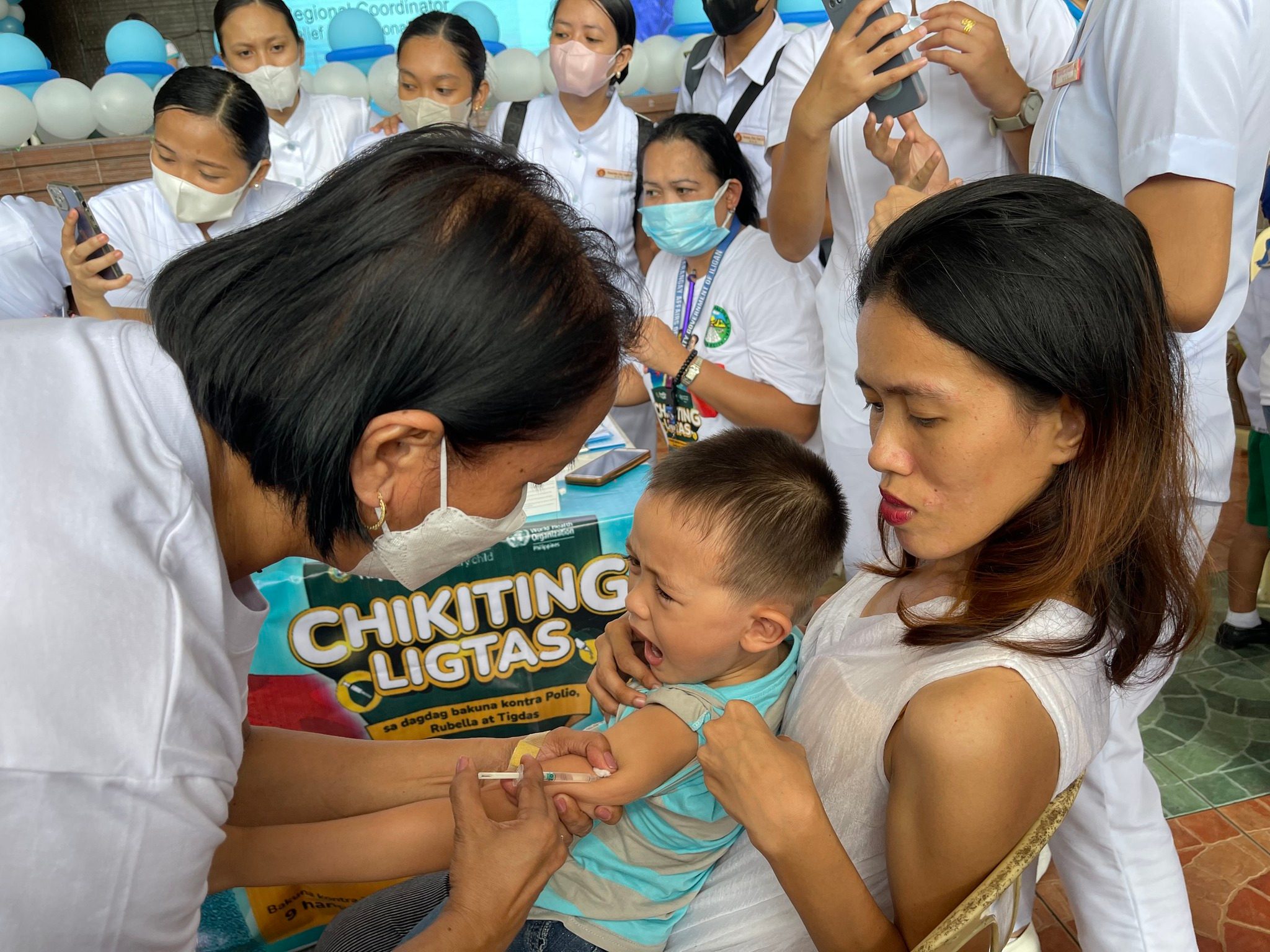window.rapplerAds.displayAd( "middle-1" );window.
rapplerAds.displayAd( "mobile-middle-1" );MANILA, Philippines – The World Health Organization (WHO) has observed a resurgence in measles in the Western Pacific region in 2025, with the Philippines reporting a 27% increase in cases.“Measles cases in the Western Pacific have more than doubled compared to the same period last year, with outbreaks reported from Cambodia, Palau People’s Democratic Republic, Mongolia, and ongoing transmission in Malaysia, the Philippines, and Vietnam,” WHO Western Pacific Regional Director Saia Ma’u Piukala said in a press conference on Monday, April 7.

“The rising cases also increases the risk of international spread,” he added.Measles is a contagious airborne disease that spreads through coughs and sneezes. Having rashes is among the symptoms most immediately seen after contracting the virus.
Data from the Philippines’ Department of Health (DOH) show that from January 1 to March 15 this year, the country has logged 1,185 cases, up from the 930 recorded in the same period in 2024. Most of the cases are from Metro Manila (295), Central Luzon (150), and Calabarzon (144).Must Read Rising dengue cases seen in Metro Manila, Calabarzon, Central Luzon According to the DOH, most of those affected are unvaccinated against measles.
The WHO on Monday emphasized the importance of getting inoculated as the disease has been underestimated. “Measles is an incredibly safe vaccine,” said Richard Duncan, the coordinator for vaccine-preventable diseases and immunization at the WHO Western Pacific office.“The benefits of measles vaccine far outweigh any perceivable risks and I think the key thing to focus on here is the risk of measles itself.
...
If a child is infected with measles...
[it’s] a very real risk in mortality and/or death, but also a risk of long-term consequences as well, and I think those things are life-changing for these children and also devastating for the families too.”Early symptoms of measles — having a runny nose, cough, red and watery eyes, and small white spots inside the cheeks — can start showing four to seven days after exposure. The rash would start about a week later, usually on the face and upper neck.
According to the WHO, the virus may also lead to deaths and complications such as blindness, ear infections, and pneumonia, among others. Contracting measles during pregnancy could also be dangerous for both the mother and the baby, who may be at risk of being born prematurely.While there is no specific treatment for measles, it is a vaccine-preventable disease.
window.rapplerAds.displayAd( "middle-2" );window.
rapplerAds.displayAd( "mobile-middle-2" );However, the WHO also acknowledged on Monday that there has been an increase in vaccine-hesitancy behavior among Filipinos, particularly after the COVID-19 pandemic.Must Watch EXPLAINER: The Philippines’ fight vs vaccine hesitancy For Deputy WHO Representative to the Philippines Dr.
Eunyoung Ko, the country may start with making sure that the vaccine against measles is “available in every healthcare facility.” Questions about the vaccine should also be answered well to allay the public’s concerns.The Philippines is currently catching up on vaccinating children — targeting to inoculate 2 million children born every year.
The country’s immunization program includes a vaccine against measles.As of September 2024, the DOH has vaccinated 34% of the country’s child population. – Rappler.
com.
Technology

WHO stresses need for vaccinations amid measles resurgence in Western Pacific

Data from the Philippines' Department of Health show that from January 1 to March 15, the country has logged 1,185 measles cases















